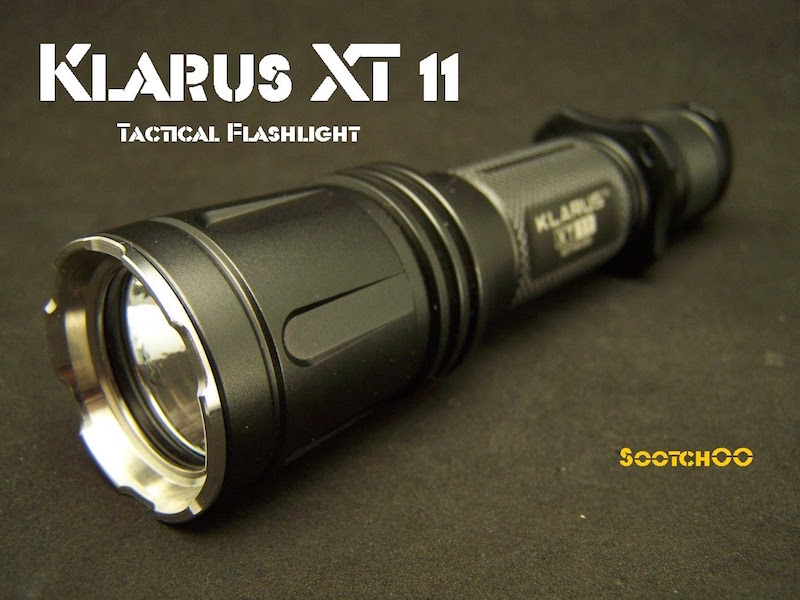Hol Dir den wöchentlichen SPARTANAT-Newsletter.
Dein Bonus: das gratis E-Book von SPARTANAT.

REVIEW: Klarus XT11 Taschenlampe
Taschenlampen sind ein essenzielles Werkzeug in jeder taktischen Anwendung, sei es nun beim Militär, der Polizei oder im Sicherheitsdienst, eine Möglichkeit bei Nacht sehen zu können, optische Signale zu geben oder das Gegenüber zu blenden sollte immer am Mann sein.In der Tat sind es heutzutage fast immer mehrere Lampen die der Nutzer mit sich führt. Ob es nun eine Feldlampe, Kopflampe, Suchlampe oder eben eine taktische Lampe ist, das hängt von den Anforderungen und Präferenzen des Anwenders ab. Heute wollen wir uns mit einer taktischen Lampe beschäftigen, namentlich der Klarus XT11. Doch bevor wir auf das Produkt eingehen sollte erst einmal geprüft werden was eine „taktische“ Lampe denn nun ausmacht. Während allgemein alle Lampen Einsatz- und Führungsmittel in einem darstellen sind „Tactical“ Flashlights primär als Einsatzmittel ausgelegt und optimiert. Sie sollen uns bei Durchsuchungen, Personen- und Fahrzeugkontrollen helfen den Durchblick zu behalten und stellen dank hoher Leuchtkraft und des Stroboskopmodus einen Multiplikator im Bereich der Selbstverteidigung und im Feuergefecht dar.
Funktionen als Führungsmittel z.B. als Signalleuchte oder zum behelfsmäßigen Absichern einer Unfallstelle können sie nur sehr begrenzt wahrnehmen, denn unter mehr Leucht- und Farbmodi und den damit verbundenen zusätzlichen Schaltplänen und Knöpfen würde die Ergonomie oder vorallem die Stresssicherheit leiden.
Kommen wir jetzt zur XT11 von Klarus, denn genau bei der Stresssicherheit geht diese ansonsten recht konventionelle LED Lampe (warum auch das Rad neu erfinden?) ganz neue Wege. Lessons learned aus diversen Einsatzberichten zeigen, dass in Kontaktsituationen die Feinmotorik des Anwenders stark abnimmt und somit alle wichtigen Schalter (Stroboskop, An-/Aus) einer Lampe an einer Stelle und gut erreichbar angebracht sein sollten. Dies wird erst recht problematisch wenn man das handliche Format bedenkt, welches für taktische Lampen erforderlich ist. Die meisten Hersteller umgehen dieses Problem entweder durch das auslassen von Funktionen wie dem Strobe oder, noch schlimmer, komplizierten Reihenschaltungen und/oder Drehschaltern. Lösungen die oft darin resultieren dass bei plötzlichem Lichtbedarf der falsche Leuchtmodus oder sogar garkeiner aktiviert wird.
Die Klarus XT11 funktioniert über einen auf der Rückseite installierten Doppelschalter, zwei untereinander angebrachte Knöpfe, um präzise zu bleiben. Der Hauptschalter ist ca. doppelt so groß wie der Sekundärschalter und ist für das An- und Ausschalten des Lichts reserviert, das Licht brennt bei Aktivierung mit der maximalen Leuchtkraft von 820 Lumen. Der Sekundärschalter ist kleiner und tiefer gelegen und aktiviert den Stroboskopmodus bzw. schaltet bei eingeschaltetem Primärschalter durch die einzelnen Helligkeitsstufen.
Diese Konstruktion garantiert dass in beispielsweise einer Selbstverteidgungssituation, in der das Reflexhafte zusammenpressen der Finger normal ist, IMMER der Stroboskopmodus oder aber der stärkste Leuchtmodus aktiviert ist. Eine Tatsache die man an den meisten anderen Lampen vermisst.
Der Grundaufbau der XT11 ist hingegen mit den Maßen 149mm in der Länge und 35mm im Durchmesser recht konventionell, ebenso wie die 2 CR123 Batterien oder Akkus die für den Betrieb benötigt werden. Die zuvor erwähnten Stromquellen ermöglichen im Übrigen eine recht hohe Brenndauer von über 3 Stunden auf dem höchsten Leuchtmodus von ca.820 Lumen, 10 Std. bei 160 Lumen,73 Stunden bei 11 Lumen und ganze 6 Stunden Stroboskop Modus (820 Lumen). Was zum Thema Strobe noch gesagt werden muss ist dass es sich um ein Stroboskop mit variierender Frequenz handelt, was verhindern soll dass sich die Augen nicht zu schnell an einen Takt gewöhnen. Ob das Sinn macht oder nicht sei dahingestellt, denn das Stroboskop ist in allen Variationen sehr schnell getaktet und lässt längere Pausen vermissen. Was im Nahbereich zur Selbstverteidigung noch vertretbar ist kann im Feuergefecht schnell zur Gefahr werden, denn auf Distanz reagieren die Augen anders, hier hat es sich in unseren Testläufen eher bewährt die XT11 schnell hintereinander an- und auszuschalten.
 Auch sind die 820 Lumen schon fast zuviel des „Guten“ denn gerade in beengten Räumen kommt es schnell zum „Whiteout“, also dem unkenntlich werden von angestrahlten Details durch zuviel Lichteinwirkung.
Auch sind die 820 Lumen schon fast zuviel des „Guten“ denn gerade in beengten Räumen kommt es schnell zum „Whiteout“, also dem unkenntlich werden von angestrahlten Details durch zuviel Lichteinwirkung.
Ein echter Minuspunkt ist das Fehlen eines Schalters der sofort einen eher moderaten Lichtmodus aktiviert um z.B. Ausweise zu lesen und das Gegenüber nicht zu blenden, dieser hätte sich aufgrund seiner weniger „taktischen“ Funktion sogar auf den Seiten des Gehäuses befinden können.
Desweiteren kommt die XT11 noch mit einer heutzutage fast üblichen Zackenkrone, die als Glasbrecher, Schlaghilfe oder zum Setzen von Schmerzpunkten eingesetzt werden kann. Praktisch ist dass man diese Krone auch abnehmen kann um sich so z.B. wechselnden Dienstvorschriften anzupassen, oder um ein zu martialisches Auftreten zu vermeiden. Feste Schläge gegen einen Sandsack hält die Lampe übrigens ohne Probleme aus, selbst bei dabei gedrücktem Schalter gab es keine Wackelkontakte oder Probleme an der Tailcap. Das spricht für die Verarbeitung der in China hergestellten Lampe, der übrigens auch ein praktischer Taschenclip beigelegt ist.
FAZIT: Insgesamt gehört die Klarus XT11 derzeit wohl zu den Flaggschiffen unter den Einsatzlampen bzw. „Tactical“ Lights. Denn sie erfüllt gerade ihre Kernaufgaben mit Bravour und ist vorallem stresssicher. Leider sind die Entwickler doch etwas über ihr Ziel hinausgeschossen. 820 Lumen, brauchen wir das wirklich? Ein variierender Strobemodus der jedoch so schnell ist dass man von den Taktänderungen nichts mitbekommt, nicht gerade von Vorteil. Trotz diesen Mängeln gibt es von uns eine klare Kaufempfehlung für diese hervorragende Lampe.
Die Klarus XT11 gibt es bei GEARMANIACS um 79,90 Euro.
SPARTANAT ist das Online-Magazin für Military News, Tactical Life, Gear & Reviews.
Schickt uns eure News: [email protected]
Werbung
Hol Dir den wöchentlichen SPARTANAT-Newsletter.
Dein Bonus: das gratis E-Book von SPARTANAT.


